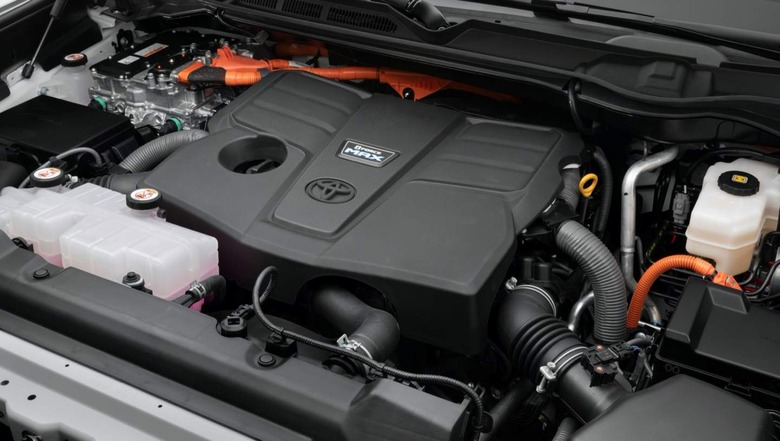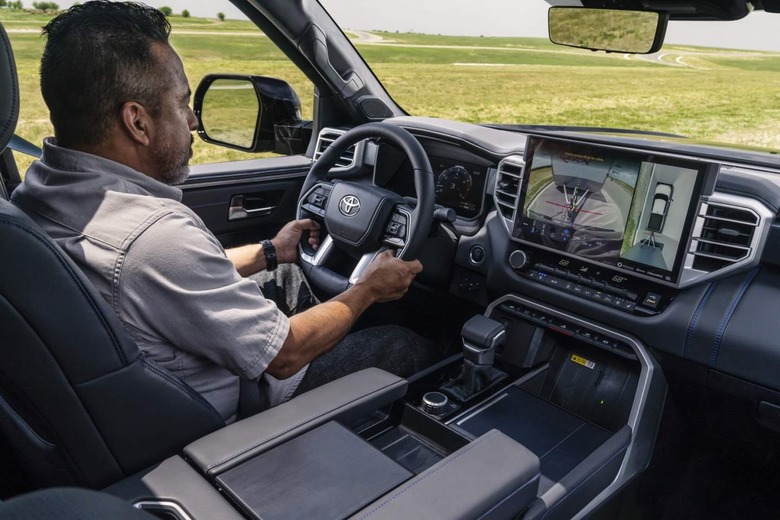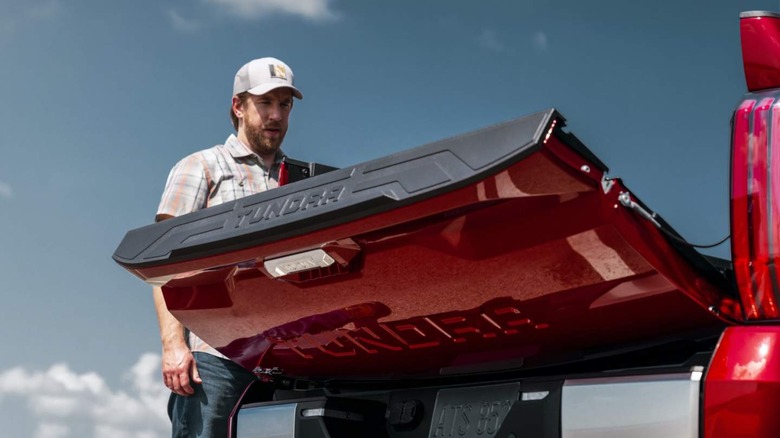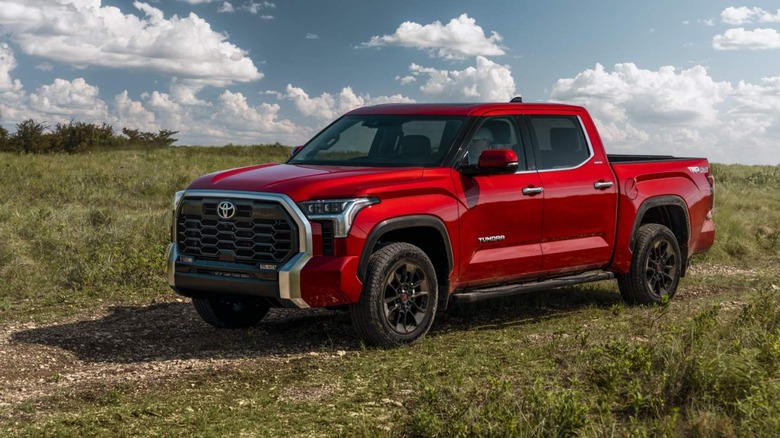Hey Toyota, Where's The New Tundra BEV?
It's not unfair to say we've been waiting for quite some time for the new 2022 Toyota Tundra. The full-sized pickup may have become a familiar sight on US roads since it first launched in 2000, but with the second-generation truck debuting all the way back in 2007 it's a reasonable observation that Toyota's upgrade cycle hasn't exactly been rapid.
That sales had been so strong up even as the Tundra aged – comfortably above 100k per year in the US for the past eight years – was a reminder that, even if the Ford F-150 gets more attention, Toyota's pickup still had plenty of fans. They've been waiting eagerly to see what the 2022 Tundra would bring in its third generation.
The answer is a brash new design with a grille that's already proving to be controversial. A new cabin that's first to introduce Toyota's brand new – and much-needed – infotainment system. And a twin-turbocharged V6 gas engine that will be offered as an i-FORCE MAX hybrid.
In short, a mixture of the familiar and the new. That could be a problem, not least when it comes to what's under the hood.

On paper, the i-FORCE MAX V6 is a competitive drivetrain. Toyota combines the twin-turbo gas engine – that in the standard Tundra is good for 389 horsepower and 479 lb-ft of torque – with a clutch-driven motor-generator, sandwiched in-between it and the 10-speed automatic transmission. A 288V nickel-metal hydride battery pack provides the juice, and the result is a total of 437 horsepower and 583 lb-ft of torque.
Toyota is, clearly, no stranger to hybrids. Its efforts with the Prius helped push gas-electric into the mainstream, and it has been steadily adding the drivetrain tech to the rest of its range since. The latest Toyota Sienna minivan, for example, is only available as a hybrid now.

Five years ago, then, the Tundra Hybrid would've legitimately been a big deal. At this point, however, it's tough to give Toyota too much credit here, given how the rest of the pickup segment has been moving. What might once have been considered a fairly conservative category has evolved into one of the most ambitious.
Ford, for example, already has a hybrid version of the F-150 on the market. Its 3.5-liter PowerBoost V6 manages 430 hp and 570 lb-ft of torque – in the same ballpark, then, as the Tundra's – but Ford also uses it to help turn the truck into a mobile generator. With the Pro Power Onboard option, you get up to 7.2 kW of power in the bed to run worksite equipment, a campsite, or even key home appliances during power outages.
Toyota's big bed tech boast, meanwhile, is a button on the key fob to open the tailgate.

More pressing, though, is the absence of any talk of full electrification for the Tundra. There it's instantly playing catch-up with rivals: Ford has the F-150 Lightning on track for a launch in fall 2022, for example. Over 150,000 people have already put down reservations for the all-electric pickup, which promises up to around 300 miles of range on a charge.
Chevrolet and Ram are working on their own pickup EVs, with special battery-electric versions of the Silverado and 1500 respectively. Rivian's R1T may be a less familiar name, but the startup hasn't been short on hype as it begins deliveries of the quad-motor truck. Tesla's Cybertruck and plenty of others are working their way to market too, taking advantage of an apparent awakening among pickup buyers to the potential advantages of EVs.
Toyota may well have a Tundra BEV on the roadmap too. Problem is, the automaker isn't talking about it publicly yet, and while playing your cards close to your chest is good advice in poker, right now it means it's hard to take the truck seriously at a time of great upheaval in work transportation. That's doubly the case when, like Toyota, you don't exactly have the strongest reputation for embracing BEVs in the first place.

There is, at least, a fully-electric Toyota platform coming. e-TNGA will underpin a range of vehicles from the company, including a new SUV. Toyota has also promised two BEVs for North America this year, though hasn't said exactly what form they'll take.
In short, though the 2022 Tundra may feel reasonably competitive right now, there's every chance that the situation will change in relatively short order. Toyota, like Honda, may be reluctant to over-promise and then run the risk of under-delivering, but by remaining coy on EVs it's doing nothing to upend perceptions that it lacks momentum in the transition to electrification.
There's a lot to like about the new Tundra. If this third-generation version is to deliver the same longevity as its predecessor, however, Toyota could start with doing a better job at pitching it for the future. After all, the days of a truck being judged solely on torque, payload, and towing power are behind us.
